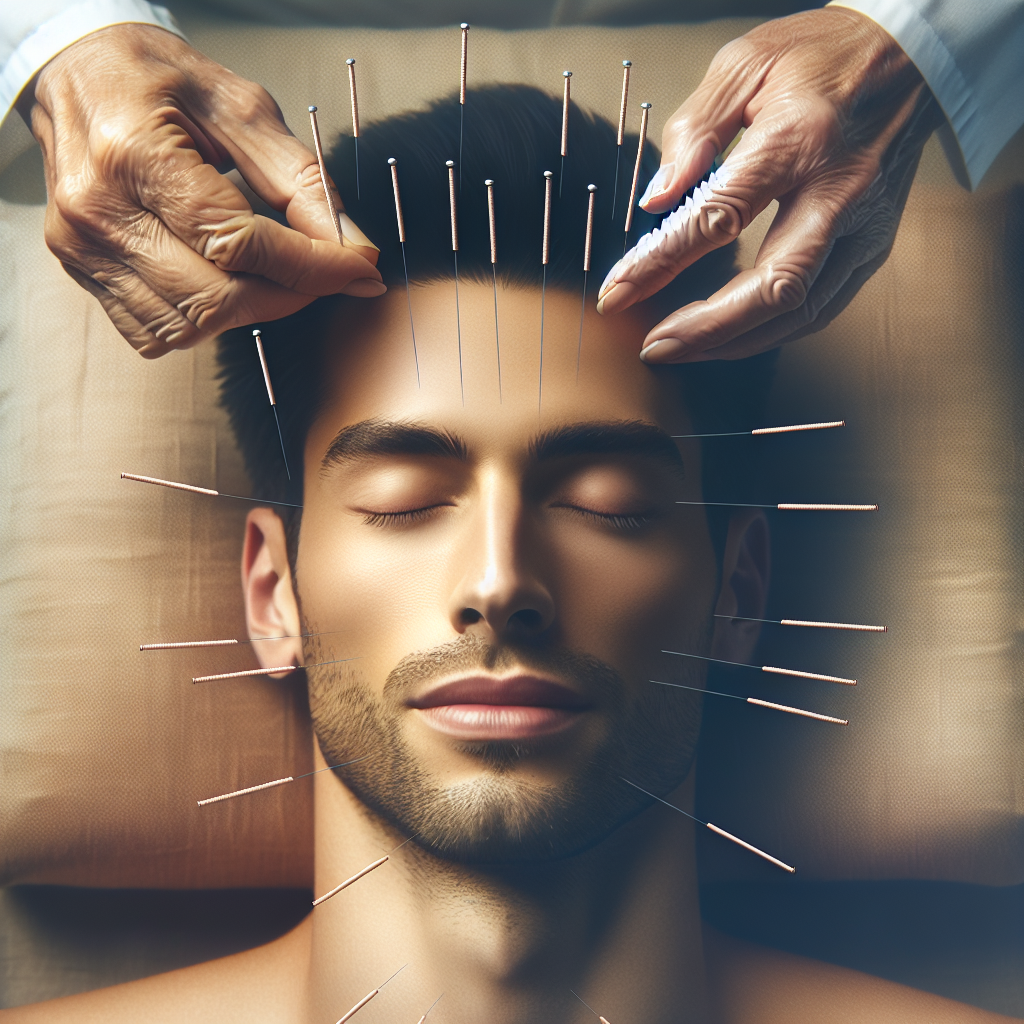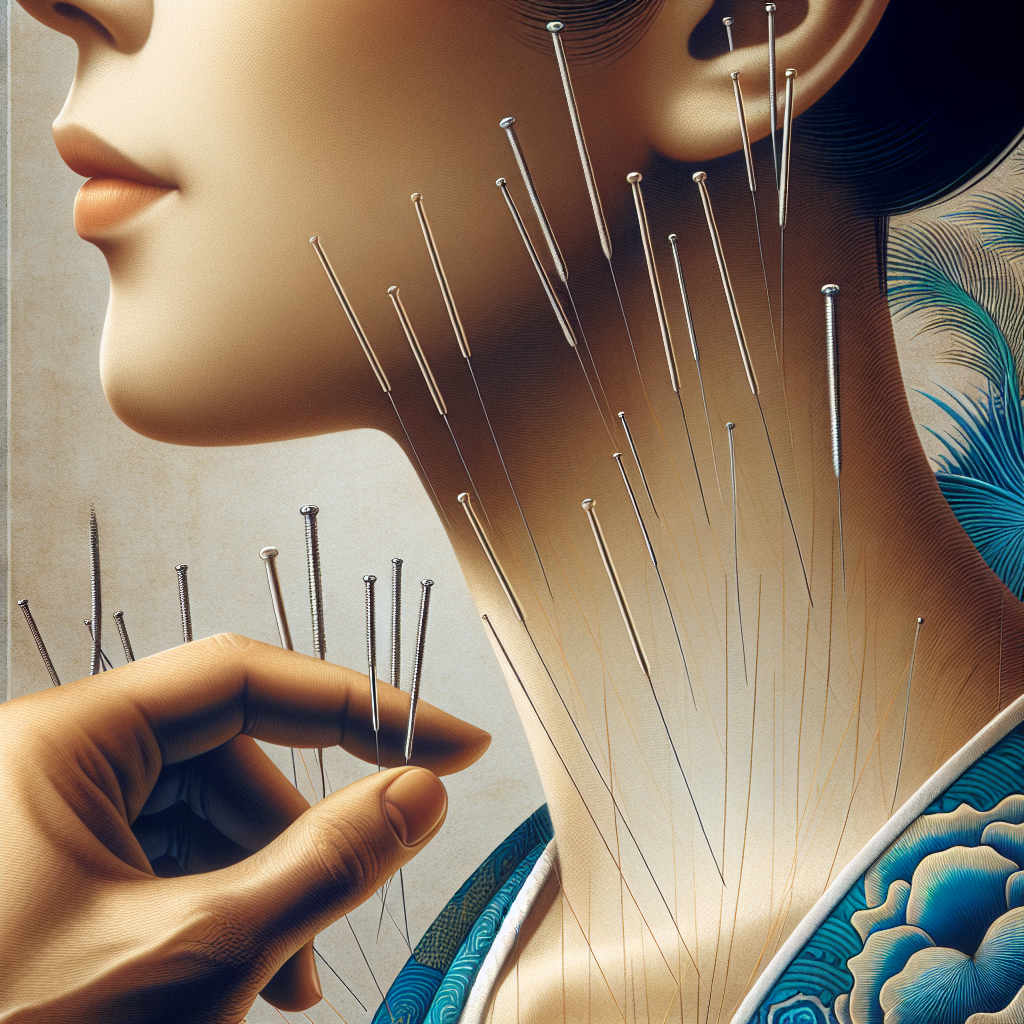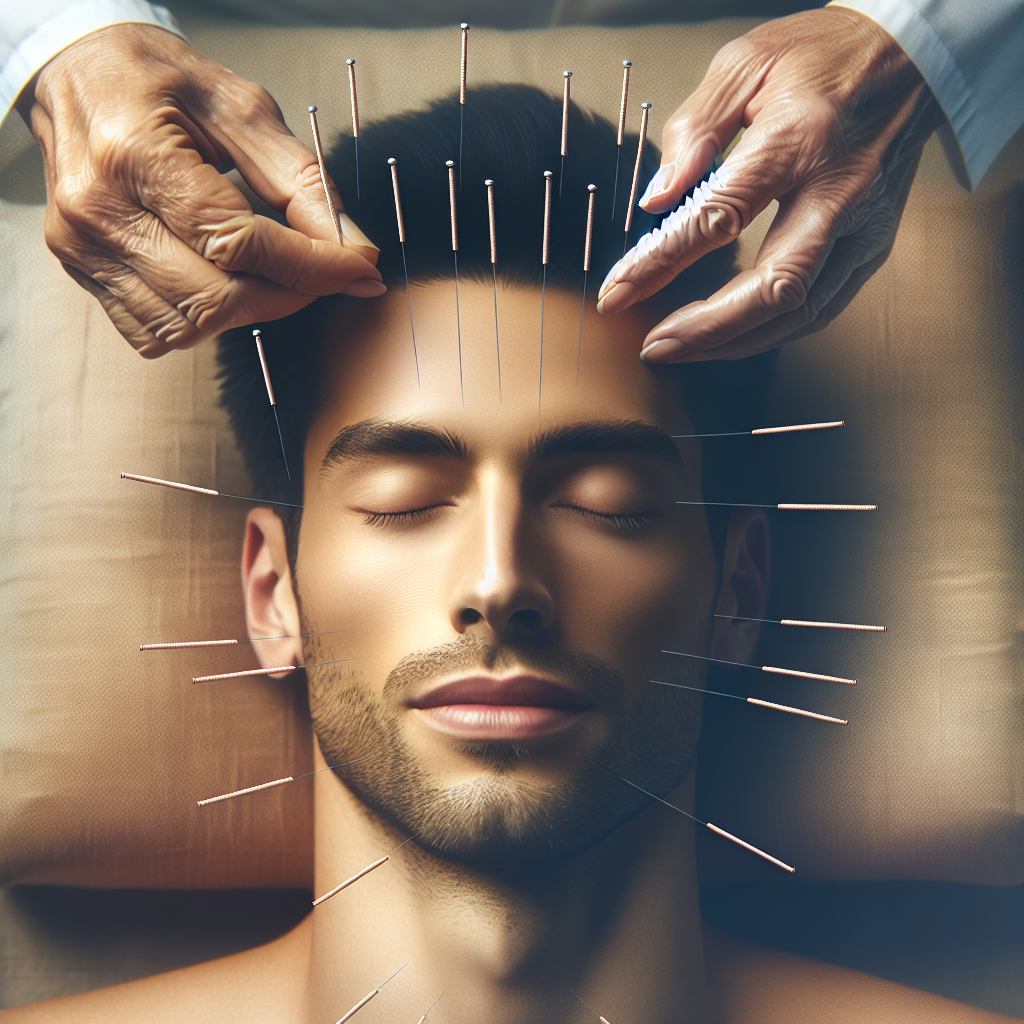You are about to embark on a journey into the fascinating world of acupuncture, a key component of Traditional Chinese Medicine. In this article, you will discover how this ancient practice, which involves the careful insertion of thin needles into specific points on the body, can benefit your overall health and well-being. From relieving pain and stress to improving digestion and sleep, acupuncture has been embraced by millions worldwide. Get ready to learn about the art and science behind acupuncture and explore why it continues to captivate and intrigue people seeking alternative healing methods. So sit back, relax, and let’s delve into the world of acupuncture.
What is Acupuncture?
Acupuncture is a holistic healing technique that originated in ancient China and has been practiced for thousands of years. It involves the insertion of thin needles into specific points on the body to promote balance and stimulate the body’s natural healing response. Acupuncture is based on the belief that the body has an energy force called qi (pronounced “chee”) that flows along pathways known as meridians. By applying needles to specific points along these meridians, acupuncturists aim to restore the flow of qi and bring the body back into balance.
History of Acupuncture
The history of acupuncture can be traced back over 2,500 years to ancient China. It is believed to have started during the Shang Dynasty (1600 to 1046 BCE) and evolved over time through different dynasties. The earliest written record of acupuncture can be found in the ancient text known as the Huangdi Neijing, or the Yellow Emperor’s Inner Canon, which dates back to the 2nd century BCE. This text contains detailed descriptions of the meridian system and the use of acupuncture to treat various ailments.
Theory and Concept of Acupuncture
Acupuncture is based on the principles of Traditional Chinese Medicine (TCM), which views the body as a holistic system of interconnected parts. According to TCM theory, health is achieved when there is a harmonious balance between the opposing forces of yin and yang and the smooth flow of qi throughout the body. When this balance is disrupted, illness or disease may occur. Acupuncture aims to restore this balance by unblocking the flow of qi and promoting the body’s natural healing abilities.
How Acupuncture Works
The exact mechanisms by which acupuncture works are still not fully understood in Western medicine. However, there are several theories as to how it may have its therapeutic effects. One theory suggests that the insertion of acupuncture needles stimulates the release of endorphins, which are the body’s natural painkillers. Another theory proposes that acupuncture stimulates the release of neurotransmitters, such as serotonin and dopamine, which can help regulate mood and promote a sense of well-being. Acupuncture may also have an effect on the autonomic nervous system, helping to regulate blood pressure, heart rate, and other bodily functions.
Traditional Chinese Medicine (TCM)
Overview of TCM
Traditional Chinese Medicine (TCM) is a comprehensive system of healthcare that encompasses various modalities, including acupuncture, herbal medicine, diet, and exercise. TCM views the body as a microcosm of the universe, with balance and harmony being essential for health. In addition to acupuncture, TCM also emphasizes the importance of lifestyle factors such as diet, exercise, and emotional well-being in maintaining health and preventing disease.
Principles and Concepts of TCM
TCM is based on several key principles and concepts. These include the concept of yin and yang, which represent opposing forces that must be in balance for optimal health. Yin is associated with darkness, coldness, and rest, while yang is associated with light, warmth, and activity. Another important concept in TCM is the idea of the Five Elements, which are wood, fire, earth, metal, and water. These elements are believed to be interconnected and influence the functioning of different organs and systems in the body.

The Role of Qi in TCM and Acupuncture
Understanding Qi (Vital Energy)
Qi, often translated as “vital energy,” is a fundamental concept in TCM and acupuncture. It is believed to flow through the body along pathways called meridians, nourishing and regulating the functioning of organs and tissues. Qi is responsible for maintaining overall health and vitality, and any blockage or imbalance in the flow of qi can lead to health problems. Acupuncture aims to restore the flow of qi and promote balance and harmony within the body.
The Meridian System
The meridian system is a network of pathways along which qi flows. There are 12 main meridians and 8 extra meridians in the body, each associated with specific organs or functions. The meridians form a complex interconnected network, and the flow of qi along these pathways is believed to influence the functioning of the body’s organs and systems. Acupuncture points are located along these meridians and can be stimulated to unblock the flow of qi and restore balance.
The Five Elements Theory
The Five Elements theory is another important concept in TCM and acupuncture. It is based on the belief that all phenomena in the universe can be categorized into five elements: wood, fire, earth, metal, and water. Each element is associated with specific organs, emotions, and seasons. The Five Elements theory helps to understand the relationships between different organs and how imbalances in one organ can affect the others.
Acupuncture Techniques
Insertion of Acupuncture Needles
The insertion of acupuncture needles is the most well-known technique used in acupuncture. The needles used are very thin, sterile, and disposable. They are inserted into specific acupuncture points, which are determined based on the individual’s condition and the acupuncture theory being applied. The depth and angle of insertion may vary depending on the treatment goal. The needles are typically left in place for a period of time, usually around 20-30 minutes, during which the individual may experience sensations such as tingling, warmth, or a dull ache.
Electroacupuncture
Electroacupuncture is a variation of traditional acupuncture in which a small electric current is applied to the acupuncture needles. This technique is believed to enhance the effects of acupuncture by providing a continuous stimulation to the acupuncture points. Electroacupuncture is commonly used in the treatment of pain conditions, neurological disorders, and musculoskeletal injuries.
Cupping Therapy
Cupping therapy involves the use of special cups that are placed on the skin to create a suction effect. This technique is believed to stimulate blood flow, relax muscles, and promote healing. The cups can be made of glass, bamboo, or plastic, and may be left in place or moved along the skin. Cupping therapy is often used to treat musculoskeletal pain, respiratory conditions, and digestive disorders.

Acupuncture for Common Health Conditions
Acupuncture has been used for the treatment of a wide range of health conditions. While it is important to consult with a qualified healthcare professional and follow an individualized treatment plan, acupuncture may be beneficial for the following conditions:
Pain Management
Acupuncture has long been recognized for its effectiveness in relieving pain. It is commonly used to treat musculoskeletal pain, such as back pain, neck pain, and osteoarthritis. Acupuncture may help reduce inflammation, improve blood flow, and stimulate the release of endorphins, all of which can contribute to pain relief.
Digestive Disorders
Acupuncture has shown promise in the treatment of digestive disorders such as irritable bowel syndrome (IBS), acid reflux, and constipation. By promoting the flow of qi and balancing the digestive system, acupuncture may help alleviate symptoms such as abdominal pain, bloating, and irregular bowel movements.
Stress and Anxiety
Acupuncture is known for its ability to promote relaxation and reduce stress. It may help regulate the body’s stress response and promote a sense of calm and well-being. Acupuncture has been used to treat anxiety, depression, and insomnia with positive results.
Insomnia
Acupuncture can be an effective treatment option for individuals suffering from insomnia or other sleep disorders. By promoting relaxation and reducing stress, acupuncture may help improve sleep quality and duration.
Fertility and Women’s Health
Acupuncture has been used as an adjunct therapy for fertility treatments, such as in vitro fertilization (IVF). It may help regulate hormonal imbalances, improve blood flow to the reproductive organs, and reduce stress, all of which can increase the chances of conception.
Respiratory Disorders
Acupuncture has been found to be beneficial in the treatment of respiratory disorders such as asthma, allergies, and chronic obstructive pulmonary disease (COPD). It may help reduce inflammation, improve lung function, and relieve symptoms such as shortness of breath and wheezing.
Dermatological Conditions
Acupuncture can also be used in the treatment of certain dermatological conditions, such as eczema, acne, and urticaria (hives). By addressing imbalances in the body’s energy system, acupuncture may help reduce inflammation and improve skin health.
Benefits and Efficacy of Acupuncture
Scientific Research on Acupuncture
Over the years, there has been a growing body of scientific research on acupuncture and its effectiveness. Numerous studies have shown positive results for the use of acupuncture in various conditions, including pain management, nausea and vomiting, and osteoarthritis. While more research is still needed to fully understand the mechanisms of acupuncture and its efficacy, the available evidence suggests that acupuncture can be a valuable treatment option.
Placebo Effect and Acupuncture
Some critics argue that the effects of acupuncture may be attributed to a placebo effect, meaning that individuals experience improvement simply because they believe they are receiving a beneficial treatment. However, research has shown that acupuncture has specific physiological effects that cannot be solely explained by the placebo effect. For example, brain imaging studies have demonstrated that acupuncture can modulate the activity of certain brain regions involved in pain perception.
Potential Benefits and Limitations
While acupuncture has shown promising results in the treatment of various health conditions, it is important to note that it may not be effective for everyone or for every condition. The effectiveness of acupuncture can vary depending on factors such as the individual’s overall health, the specific condition being treated, and the skill and experience of the acupuncturist. It is also important to consider acupuncture as part of a comprehensive treatment plan that may include other modalities and lifestyle changes.
Finding an Acupuncturist
Choosing a Licensed and Accredited Practitioner
When seeking acupuncture treatment, it is important to choose a licensed and accredited acupuncturist who has undergone appropriate training and education. In many countries, including the United States, acupuncturists must be licensed by the relevant regulatory body. This ensures that they have met certain educational and ethical standards and are qualified to practice acupuncture safely and effectively.
Questions to Ask an Acupuncturist
When selecting an acupuncturist, it can be helpful to ask a few key questions to ensure they are a good fit for your needs. Some questions you may consider asking include:
- What is your educational background and training in acupuncture?
- How long have you been practicing acupuncture?
- What conditions do you specialize in treating?
- What is your treatment approach and philosophy?
- Do you have any experience working with individuals with my specific condition?
- What can I expect during an acupuncture session?
- How many treatments are typically needed to see results?
Safety and Hygiene Practices
Safety and hygiene practices are of utmost importance when receiving acupuncture treatment. It is essential to choose an acupuncturist who follows strict sterilization procedures and uses disposable needles. This helps to prevent the transmission of infections and ensures a safe and clean treatment environment.
Preparing for an Acupuncture Session
What to Expect During Initial Consultation
During the initial consultation with an acupuncturist, they will gather detailed information about your medical history, current symptoms, and lifestyle factors. This will help them create an individualized treatment plan that addresses your specific needs. The acupuncturist may also conduct a physical examination, which may involve examining your tongue, feeling your pulse, and palpating certain areas of the body.
Preparation Guidelines
There are a few guidelines to follow to prepare for an acupuncture session. It is recommended to wear loose and comfortable clothing that allows easy access to the areas being treated. It is also advisable to eat a light meal or snack before the session to prevent lightheadedness or dizziness. It is important to communicate any concerns or questions you may have with your acupuncturist before your session.
Potential Side Effects and Risks
Acupuncture is generally safe when performed by a trained professional. However, like any medical intervention, there may be some potential side effects and risks. These can include temporary soreness or bruising at the needle insertion sites, dizziness, or fatigue. Serious complications from acupuncture are rare but can include infection or injury if proper hygiene and safety practices are not followed. It is important to discuss any potential risks with your acupuncturist before starting treatment.
Integration of Acupuncture with Western Medicine
Collaborative Approach to Healing
Integrating acupuncture with Western medicine can offer a complementary and collaborative approach to healing. Many healthcare providers recognize the benefits of acupuncture and may recommend it as part of a comprehensive treatment plan. By combining the strengths of both Western medicine and acupuncture, individuals can often experience improved health outcomes and a more holistic approach to their healthcare needs.
Conditions Where Acupuncture Can Be Used Alongside Western Medicine
Acupuncture can be used alongside Western medicine for a wide range of conditions. Some examples include:
- Chronic pain management, such as back pain or migraines, where acupuncture can help reduce reliance on pain medications.
- Cancer treatment support, where acupuncture can help alleviate side effects from chemotherapy, such as nausea and fatigue.
- Mental health conditions, such as anxiety and depression, where acupuncture can be used in conjunction with psychotherapy or medication.
- Women’s health issues, such as menstrual disorders or menopause symptoms, where acupuncture can provide relief alongside hormone therapy.
Conclusion
Acupuncture is a time-tested healing technique that has been used for thousands of years in Traditional Chinese Medicine. It offers a holistic approach to healthcare, focusing on restoring balance and promoting the body’s natural healing abilities. With its wide range of therapeutic benefits and growing body of scientific research, acupuncture continues to gain recognition as a valuable treatment option for various health conditions. By integrating acupuncture with Western medicine, individuals can access a comprehensive and collaborative approach to healing and wellness. If you are considering acupuncture, be sure to consult with a licensed and accredited acupuncturist to receive safe and effective treatment tailored to your needs.
